Foraging for Wild Garlic in Ballyseedy Woods
A beautiful walk in an ancient sustainable woodland near Tralee, County Kerry, Ireland
One of the things I used to love about Austria was how seasonal foods would appear on restaurant menus throughout the year. For example, in mid-summer chefs would use perfectly ripe apricots from the Wachau Valley to create both sweet and savory dishes. In the fall vintners and restaurants alike would offer “Sturm,” which is new wine that is in the process of fermentation. In November goose accompanied by fragrant cooked red cabbage would appear on menus all over Austria. And in late March chefs would incorporate wild garlic into cream soups, pastas, risottos and much more.
All of these are delicious, but I think my favorite dishes are the ones with wild garlic.
That is why my Austrian husband Gerhard and I were excited to discover that wild garlic grows in abundance every spring in Ballyseedy Woods, which is only a 40-minute drive from our current home in County Kerry, Ireland. We visited the woodland for the first time last March and thought it was absolutely beautiful.
Located just east of the city of Tralee, Ballyseedy Woods dates back to the 16th century. Within its almost 80 acres can be found at least 22 varieties of native trees—including ash, oak, yew and beech—as well as all kinds of birds, butterflies and small animals like foxes, badgers and squirrels. In addition, the mostly flat paths that wind through the forest offer humans a beautiful, tranquil place to wander, meditate and just breathe.
Unfortunately, we failed to bring any harvesting tools with us last year. So four days ago, we returned to the forest on a gorgeous, cloudless, early April afternoon equipped with the tools (a plastic sack and some scissors!) necessary to gather some fragrant leaves.
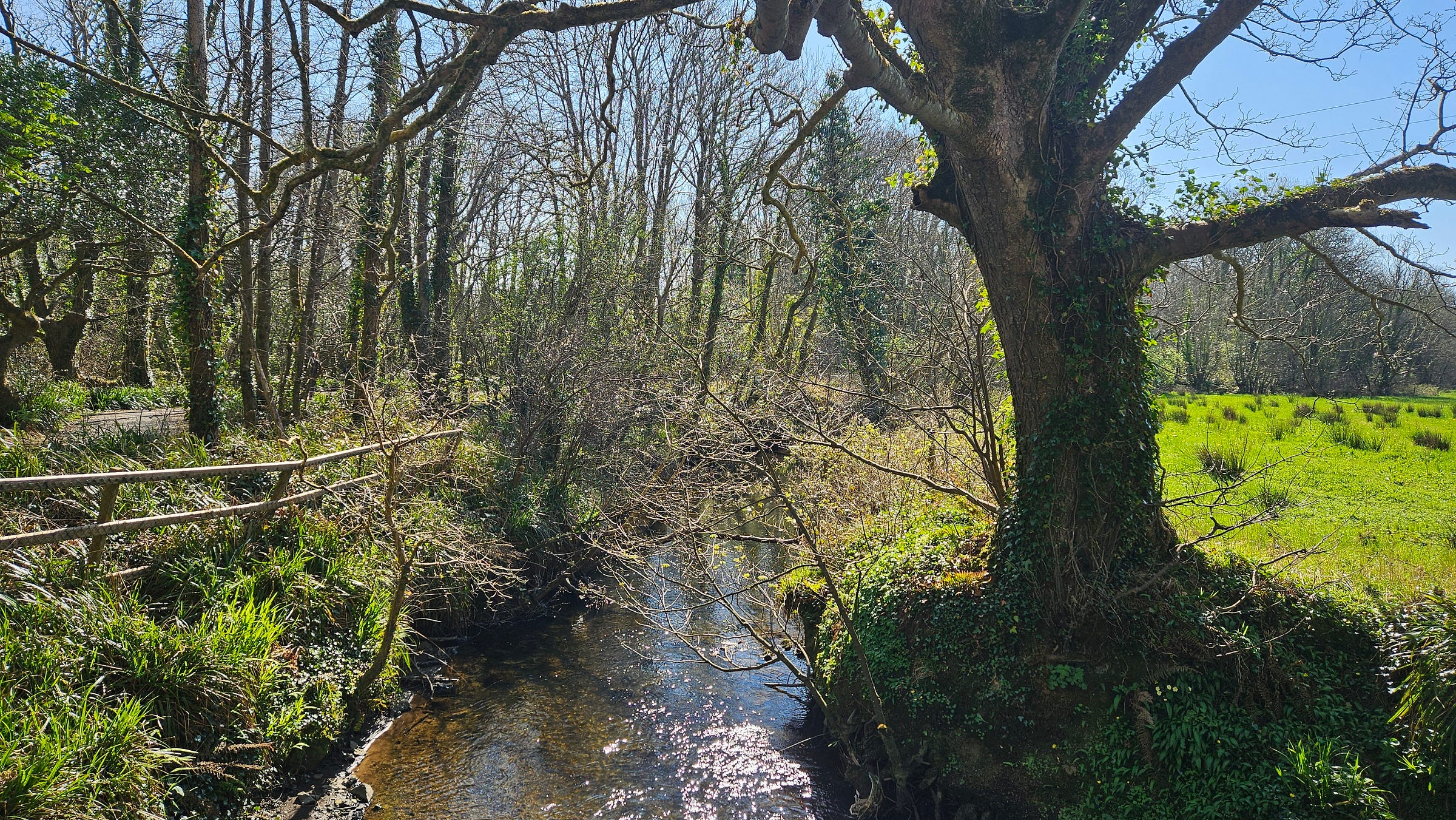
Because the woodland is so beautiful, we decided to go on a walk before picking any leaves. In addition to wild garlic—whose pretty white flowers were only starting to bloom—we saw all kinds of early spring flowers.
The Ballyseedy Woods have a long history in County Kerry. They began in the 16th century when the land belonged to a private estate owned by Sir Edward Denny (1547-1600). Denny was an English soldier, privateer and adventurer during the reign of Queen Elizabeth I who fought against the Irish in the Second Desmond Rebellion.
After the mission had succeeded, he was granted land at Tralee—as well as ownership of Tralee Castle—that had been confiscated from the slain Earl of Desmond. In 1588, Denny became High Sheriff of Kerry and was also knighted. (Over the centuries, Tralee Castle was attacked four times and is now a ruin.)
In the 18th century, the estate passed to an Anglo-Irish politician named Colonel John Blennerhasset (1691-1775). Born in County Kerry, Blennerhasset served several different times as a representative for County Kerry in the Irish Parliament. He also served as High Sheriff of Kerry in 1717.
Blennerhassett greatly expanded Ballyseedy Woods and created carefully planned walkways, stone bridges, and estate walls. Some of these walls still exist today, as well the ruins of an old mill and the Ballyseedy House, which was Blennerhassett’s original home. Later generations let the house fall into ruin as they moved their place of residence to the nearby Ballyseede Castle.
In a way, we have Blennerhasset to thank for all of the lovely wild garlic growing in the Woods. This is because it prefers to grow in ancient deciduous woodland and is actually an indicator species of ancient woodland itself.
The Latin word for wild garlic is Allium ursinum. Because it belongs to the genus Allium, it is related to onions, garlic, shallots, chives and leeks. The species name ursinum derives from the Latin ursus, or bear. This connection may have occurred because numerous folk tales relate how bears consume wild garlic after awakening from winter hibernation to remove toxins from their bodies.
The plant consists of a bulb, stem, leaves and white, star-shaped flowers, all of which are edible. Rich in vitamins A and C, calcium, iron, phosphorus, sodium and copper, it has traditionally been used in medicine to treat cardiovascular, respiratory and digestive problems, as well as to sterilize wounds.
Perhaps its greatest benefit, however, is that it just tastes good. The leaves can be eaten raw in salads, blanched and used like spinach, or made into delicious soups and pestos. The pretty white flowers can be added raw to salads, and the bulbs can be used like garlic.
So…after our walk, Gerhard and I filled a couple of plastic sacks with lovely leaves. Once we were home, I washed the leaves and dried them in a salad spinner.
Then I looked up several recipes for wild garlic cream soup (Bärlauchcremesuppe)—my favorite wild garlic dish from Austria. The recipes basically consisted of potatoes, onions, vegetable broth and wild garlic leaves—sometimes with added cream, sometimes not. After everything was cooked, I used an immersion blender to make sure the soup was nice and creamy.
On the plus side, the soup turned out nice and green (and undoubtedly full of lovely nutrients). On the negative side, however, it was completely bland and tasteless, with no hint at all of garlic! I have no idea where I went wrong or what the secret is to obtaining the delightfully flavorable soups I have tasted in Austria.
If any of you have a suggestion, I would love to hear it!
Getting There
Whether you want to forage wild garlic or not, the woodlands are well worth visiting at any time of year. Here are maps of where they are located:





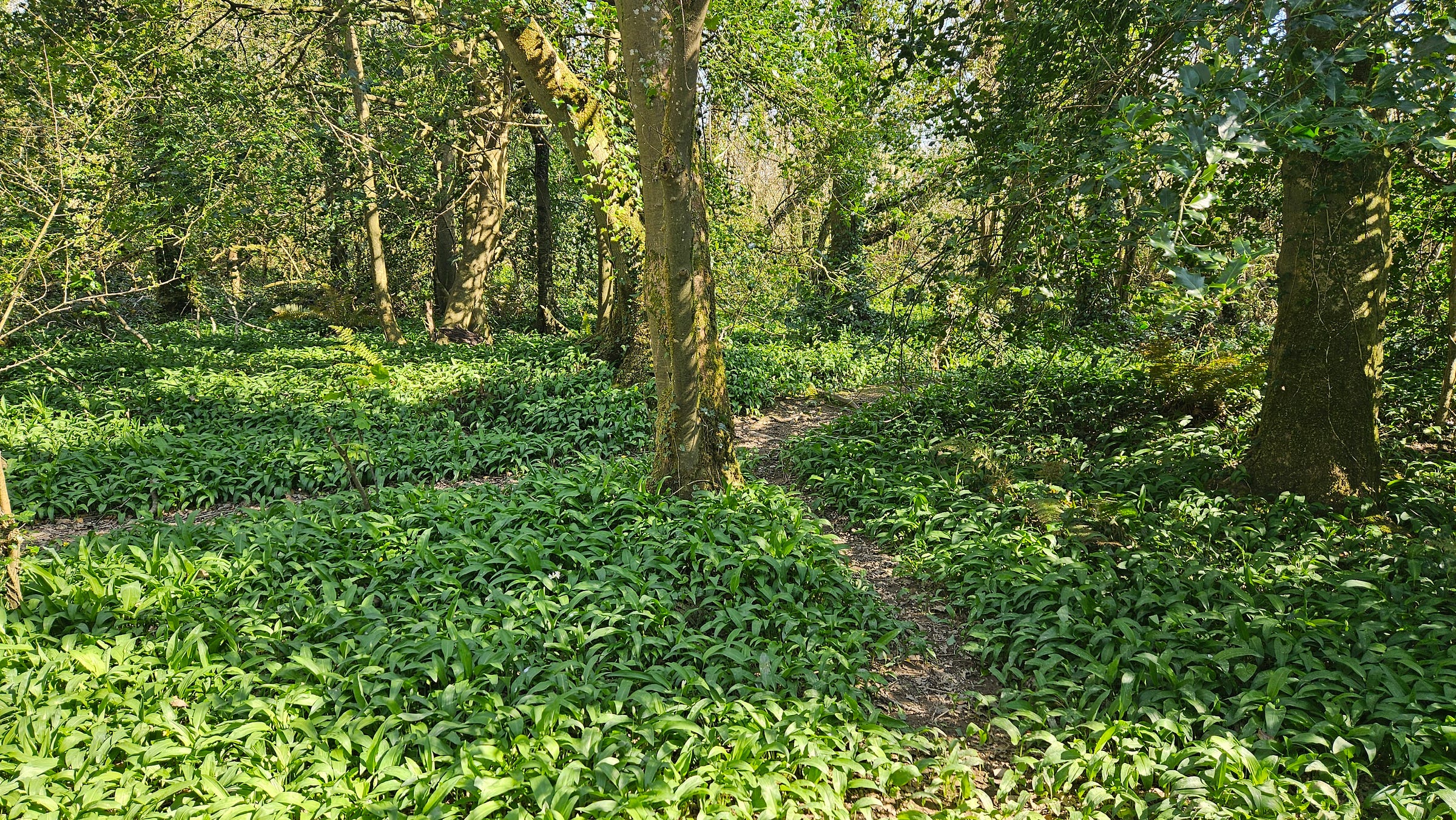

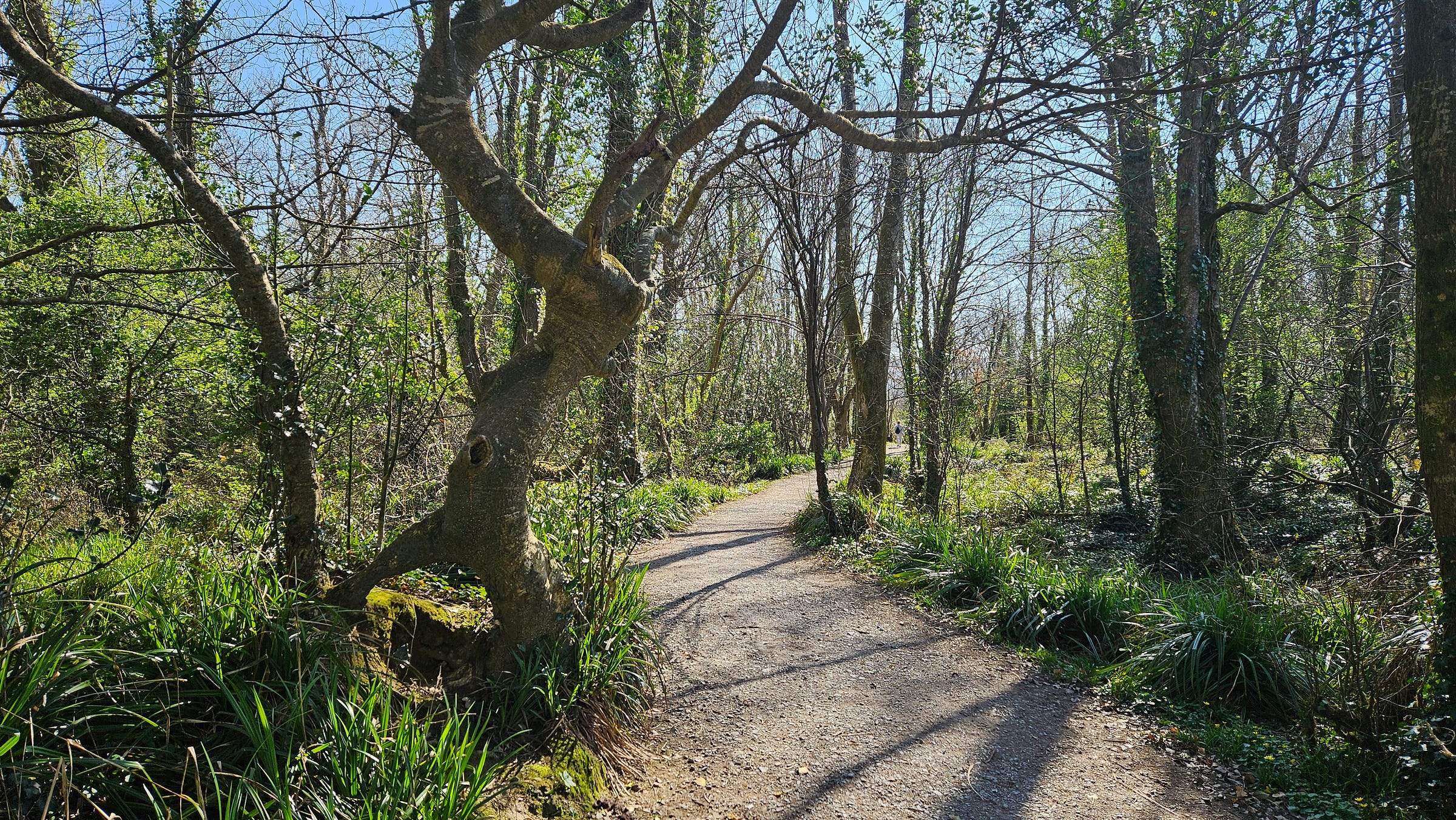
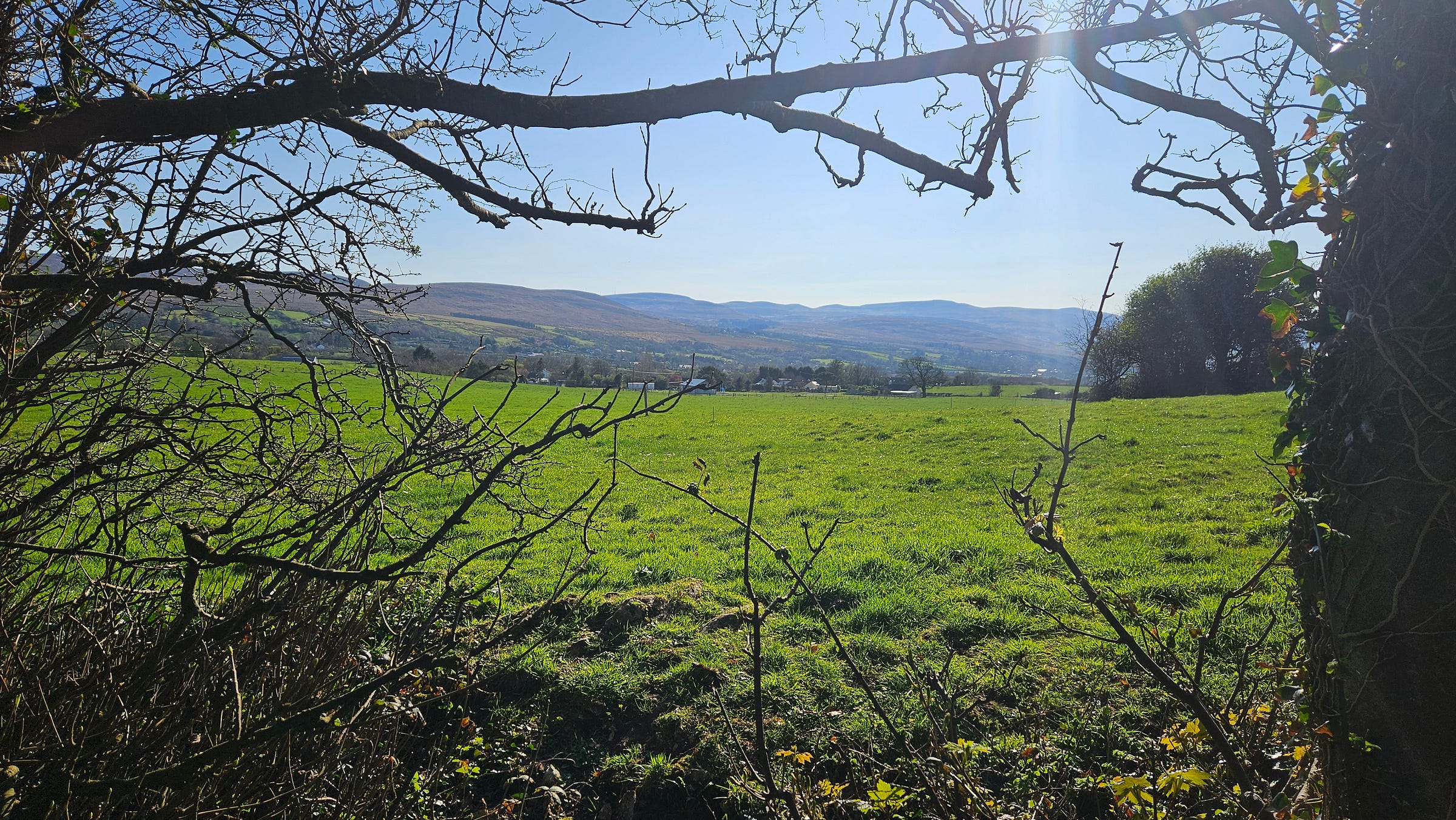
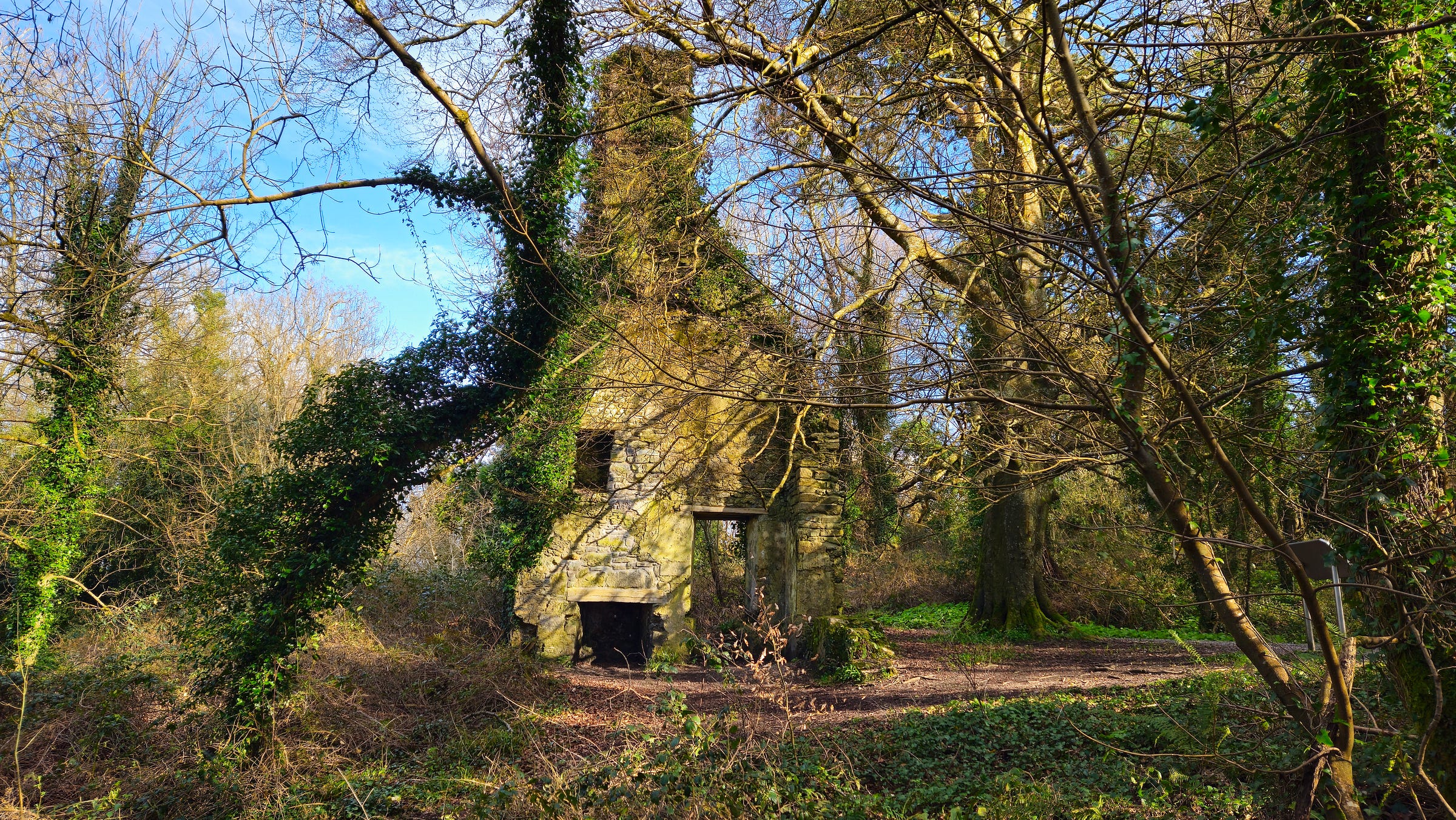
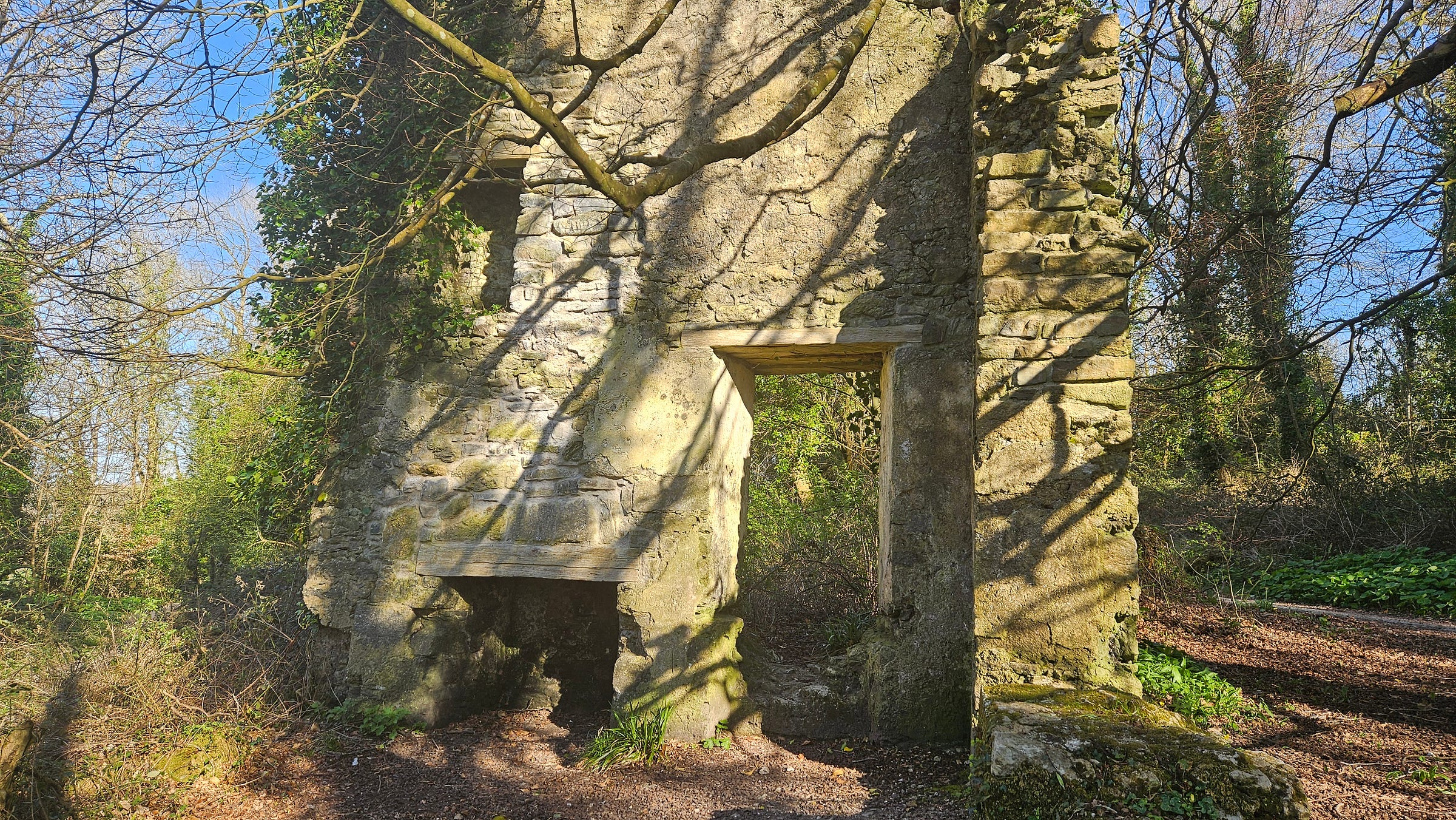
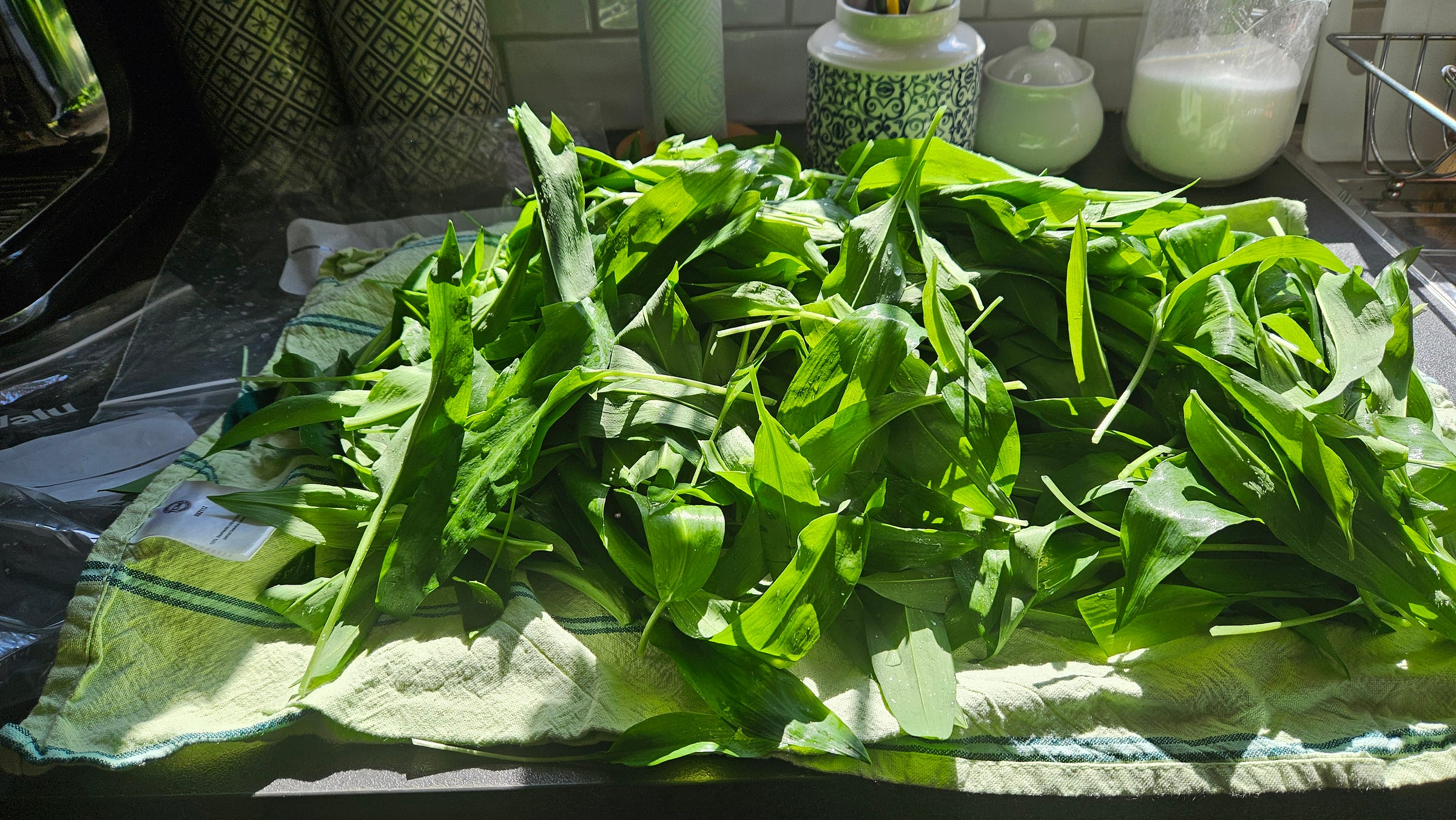
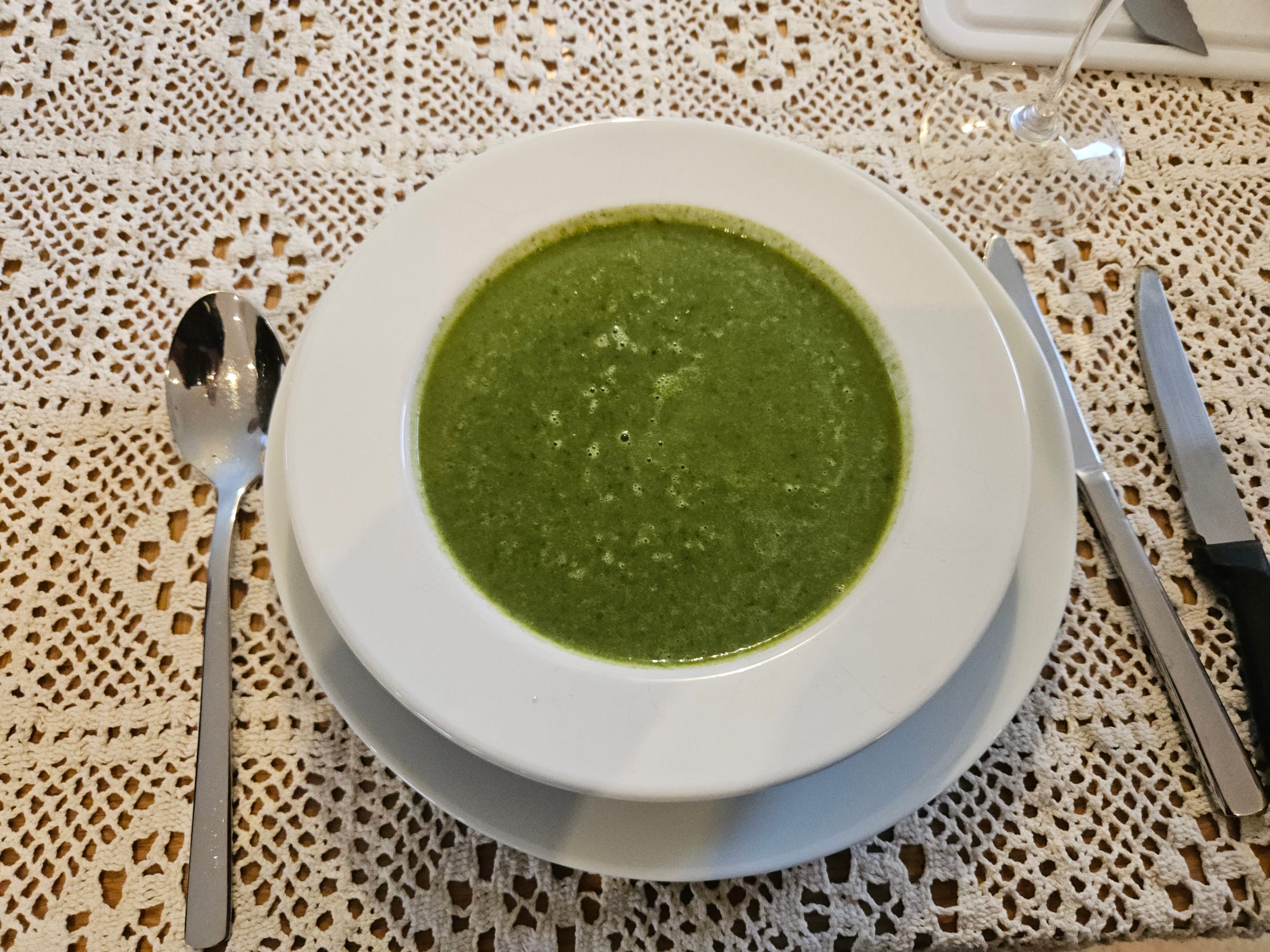


Complete with man, Clarice! Wow, those photos. Stuck in a gorgeous glow of green, and then I was at Hansel and Gretel's, and then garlic leaves (which I have never thought of using for food) and your lovely soup at the end. A fine outing indeed!
A lovely and evocative story, thank you ! I had not heard of these woods, which sound so inviting. Wild garlic in Irish, by the way, is "Gáirleóg Mhuire," or "Mary's garlic"--so much in Irish gets attributed to the Blessed Virgin. You might enjoy exploring Duchas.ie, which gives access to documents collected by the Irish Folklore Commission, whose legacy is in the National Folklore Collection at UCD. There is a lot about herbs in general, as herbal cures and medicines are integral to folklore. And you might find there stories form people who live where you now reside as well ! https://www.duchas.ie/